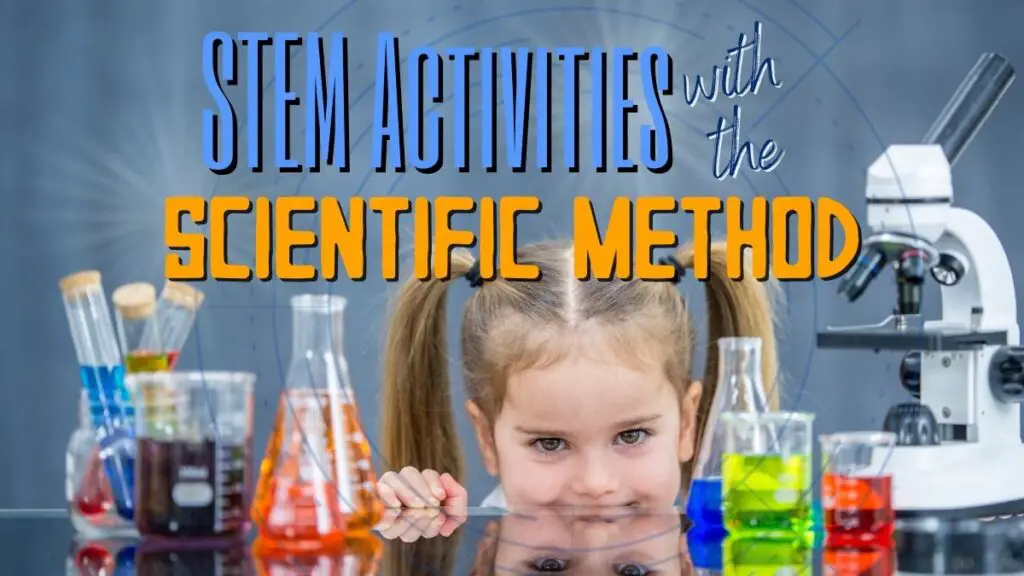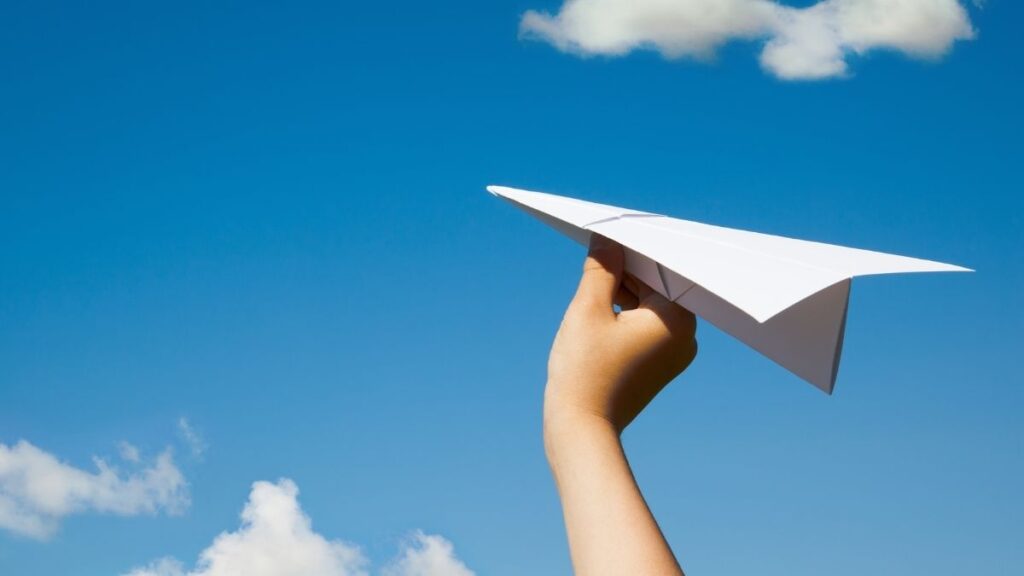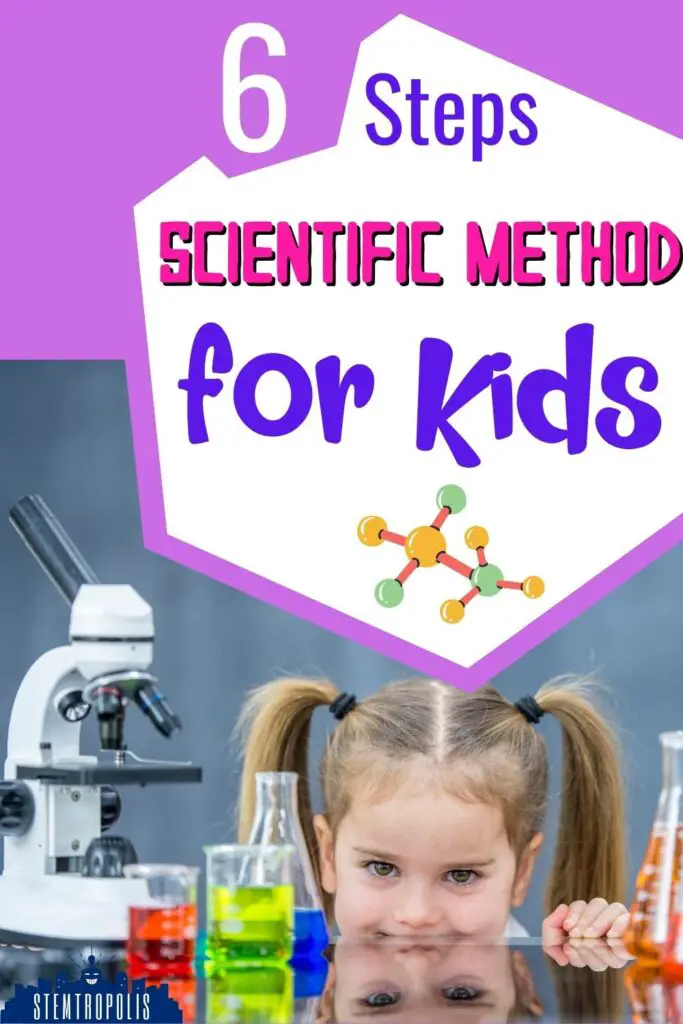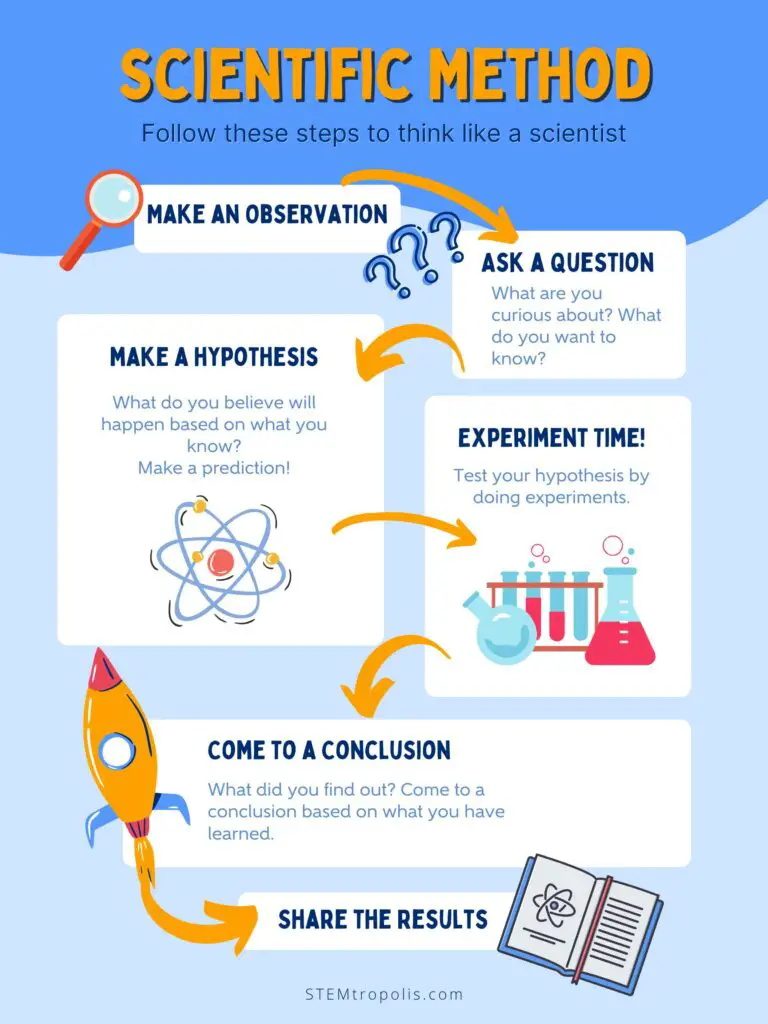Whether we notice or not, science is all around and part of nearly everything we experience. Science is sometimes viewed as a difficult subject reserved for the smartest or nerdiest students. Presented with the right angle, science can be a fascinating subject accessible to all. With a little scientific thinking, we can tap into a whole new way of understanding the world around us.
Using the scientific method to relay facts and information is a great way to analyze and solve problems, especially for kids just learning about science. The Scientific Method includes the following steps:

- Make an observation
- Ask a question about it
- Present a hypothesis
- Test the hypothesis
- Make a conclusion
- Share the Results
If you’re asking questions and trying to solve problems, you’re well on your way. Let’s look at different ways we can use the scientific method for STEAM and STEM activities. For this article, we will be using paper airplanes as an example of a simple science experiment and discussing some other projects as well. Let’s explore!
Make an Observation
It all starts with observation. Once we notice something, we can begin to wonder about it. Follow those thoughts; there’s usually a question there.
My son was contemplating paper airplanes and was wondering why, on this specific day, when he threw one outside it went much further than in the house.
Ask a Question about the Observation
Young kids are great at this part. In their natural curiosity, they are always asking, “Why?” Why is the sky blue? Why does the sun come up every morning? Why is it dark at night? Why is it colder at night? Why is… well, you get the idea.
How is another good question, and often follows “why:” How does a phone work? How does the fridge keep food cold? How can a bird fly? Birds? Planes are heavier – how can an airplane fly?
Yes, so, back to our paper airplane: Why did our paper airplane fly farther outside than it did inside?
Great question. Let’s think about that:
Present a Hypothesis
Now that we have our question, what’s the answer? Why does that happen or why does it work that way? Critical thinking skills play heavily in this part. Kids (and adults) must use what they already know to create a logical explanation.
The hypothesis may take a bit longer than the rest of the steps. It’s our brainstorming, our thought process. Give it time and don’t be afraid of silly ideas.
The hypothesis will be a possible answer. Note it’s not necessarily THE answer, but a possible answer. We could be wrong. We could be way off base. Then again, we could be right. Or, we could just be on the right track.
If you’re doing an experiment in a group or classroom setting, discuss different possibilities and outcomes. Debate, reason, argue, and come up with a consensus on the best plausible solution.
So, why did our airplane fly further outside?
There’s more room for it to fly outside? True, but Nah. Perhaps the sun makes it go further? Nope, no solar power here. Maybe my son gained super plane throwing powers when exposed to fresh air? Not bloody likely. What about the wind?
Could the wind carry the plane further than it would go in the house with no wind? Maybe we’re on to something with the last one.
Now we’re approaching a hypothesis: The wind helps keep the plane in the air longer and enables it to fly farther.
What’s the difference between a hypothesis and a theory?
Hypothesis and theory are sometimes used interchangeably, though they do not mean the same thing. How can you make sure you’re using the correct term?
A hypothesis is, by definition, untested. It’s a hunch. It’s our best guess what we think will happen, given what we know.
A theory has already been tested as true and has some solid data behind it.
So, in that sense, with enough testing and evidence, a good hypothesis can “grow up” to become a theory. Not every hypothesis becomes a theory. Some are hypotheses are proven wrong (Like that one about kids gaining super powers by stepping outside. It’ll never make it to theory.)
For an easy to remember mnemonic think “H” and “T“
Hypothesis = Hunch
Theory = Tested & True
Test the Hypothesis
So far this has all been a lot of thinking. Now for the fun part. Science experiments!
How can you test your hypothesis to prove or disprove what you think will happen? Think of different variables that may affect your results and try to include these in your testing.
For the paper airplane, this could be a simple experiment:
Fly the plane in the house, and measure distance and flight time. You may want to do this several times and take an average distance and time.
Log your results. We’re collecting data. You could do this simply by writing each flight distance and time on a scrap of paper, or you could use a scientific journal or log book.
Now, take the plane outside. Since we’re testing the wind’s effect on our flight, it’d be best if there is at least a breeze when we’re testing. Again, throw the plane several times and take an average of your time in the air and distance measurements.
To further test our hypothesis, try throwing the plane against the wind several times as well as throwing it in the direction the wind is blowing. (Yes – if the wind blows the plane behind you in the opposite direction, you may have a negative distance reading.)
Again, record your results.

Make a Conclusion
So, we noticed something, asked why it happens, brainstormed reasons, tested our ideas, and got some results. What does all of that tell us?
Using all the results and the data collected, we can form a conclusion.
Let the data tell the story here. Approach the conclusion with an open mind and a sense of detachment, especially if your hypothesis was wrong. Failure isn’t a bad thing here, we’re simply finding the answer to our question.
So, how did our airplane do? Yes, the breeze did indeed help carry our plane further and increased both distance and flight time. (Throwing it against the wind was not quite disastrous – it did increase our distance compared to indoors. Jut sometimes that distance was in the opposite direction.)
Present the Results
When doing experiments for a Science fair or class project, the presentation is part of the assignment. In a class setting, it’s easy for groups or individuals to report back their findings
If it’s a less formal science experiment, presenting the results may be as simple as saying “Hey, I did this fun experiment and here’s what happened.”
In any event, you want to offer clear and data driven results.
Get your free scientific method infographic and access to our free printable library.
Scientific Method for Younger Kids
Still, the scientific method can be daunting for younger preschool age kids. They’re not going to care so much about hypothesizing, collecting, and analyzing data. They have a zillion questions and they want answers. They also like to do things. (Bonus points if it’s fizzy or flashy.)
At the risk of oversimplifying, we can distill the scientific method down so it’s easier to grasp for very young kids.
- What do you think will happen?
- Try it.
- What happened?
It’s easy to design activities around some simple questions and see “what happens.” We’ve done many projects and activities so you can follow along at home or in the classroom:
More Examples of Using the Scientific Method for Kids
We do a lot of cool science experiments here at STEMtropolis, and many of these activities lend themselves to doing a scientific method experiment. Here are just a few.
Does an apple float? (What about other types of fruit?)
What foods cause the most flatulence?
Can you inflate a balloon with a chemical reaction?
Learn how to use the scientific method playing Minecraft
Check out our Activities & Projects page for more ideas.
Wrap Up – Scientific Method for Kids
The scientific method lies at the core of science; it is specifically designed to provide an understanding of the world around us. Using the scientific method provides a holistic learning experience and develops logic and critical thinking skills. Creativity is also highly encouraged, and sometimes the best solutions are not the most obvious.
Through critical thinking and experimentation (and a bit of trial and error), the scientific method helps us understand complex concepts quickly and thoroughly.
It is also important to note that this method leads students to ask questions, and discover the information for themselves before drawing conclusions from the results. It’s a skill that we can apply to other areas of life beyond science. Now, get out there and find some interesting questions to start with.



